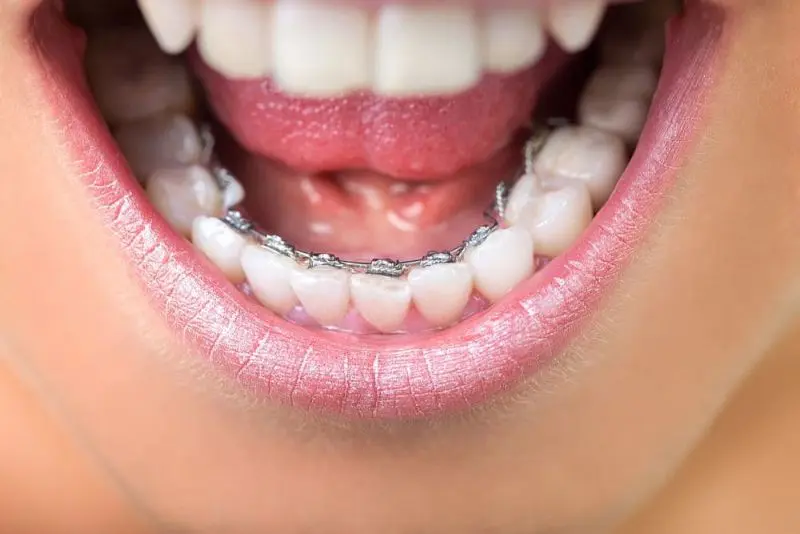Clear Aligners such as Invisalign
Clear aligners involve transparent trays, offering a subtle alternative to traditional braces.
Components
Custom-designed clear trays or ceramic brackets.
Advantages
Nearly invisible, removable for easier eating and cleaning.
Considerations
Requires strict discipline for effective use, unsuitable for severe alignment cases.


Metal Braces
Metal braces utilize durable brackets and wires, providing an effective solution for correcting significant misalignment issues. While more visible, they are reliable, cost-friendly, and yield excellent results.
Components
Metal brackets, archwire, and rubber bands.
Advantages
Highly effective for even severe cases, affordable.
Considerations
Easily noticeable, and some initial discomfort is common.
Ceramic Braces
Ceramic braces feature translucent brackets, offering a less visible alternative to traditional metal braces. Their aesthetics make them a popular choice, though they require extra caution to prevent staining or breakage.
Components
Clear ceramic brackets, an archwire, and optional rubber bands.
Advantages
Blend with natural teeth for discreet treatment, visually pleasing.
Considerations
More fragile than metal braces, prone to staining over time.


Lingual Braces
Lingual braces are affixed to the back surface of the teeth, offering a completely hidden orthodontic approach.
Components
Custom-crafted brackets and an archwire.
Advantages
Invisible from the front, effective for complex orthodontic problems.
Considerations
Can initially impede speech, may require more effort to clean effectively.
Considerations for Different Age Groups
Selecting the ideal braces depends on personal requirements, aesthetic goals, and the severity of the dental concerns. An orthodontic consultation is key to finding the most effective option for treatment, ensuring a healthier and more confident smile.

Braces FAQ
How do I know which type of braces is right for me?
The best choice of braces depends on your specific dental requirements, personal aesthetic goals, and lifestyle habits. Custom digital braces are budget-friendly and excellent for addressing severe alignment issues. Ceramic braces, being less visible, are preferred for those valuing discretion, though they might cost slightly more. Clear aligners are highly discrete and flexible but work best for less severe cases. Dr. Cameron Freelove, DDS, can help guide you toward the ideal choice for your treatment plan and lifestyle.
How do ceramic braces differ from metal braces?
While both work to reshape smiles efficiently, ceramic braces are designed to blend with your teeth, making them far less noticeable compared to metal braces. Ceramic options are a common choice for patients who value aesthetics, though their slightly higher cost and need for meticulous cleaning should be considered. Both options deliver effective results, and choosing the right one depends on your preferences and orthodontic goals.
Which type of braces is the fastest for results?
The duration of your orthodontic treatment hinges on the severity of the case and the specific braces selected. For milder adjustments, clear aligners may deliver quicker results if worn consistently. For more complex alignment problems, custom digital braces often provide the fastest and most reliable results, as they exert consistent pressure. Dr. Cameron Freelove, DDS, will tailor a treatment plan based on your unique needs to achieve the best results.


